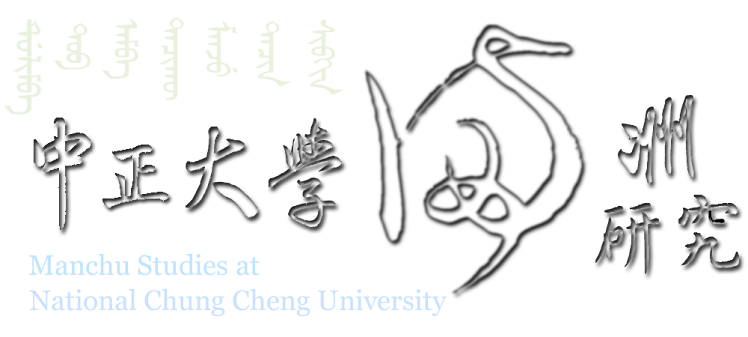「帝國轉向」及其對中國歷史研究的意義
歐立德

2015年12月15日,歐立德教授在清華大學做題為“帝國的轉向及其對中國歷史研究的意義”的演講(The Imperial Turn and Its Meaning for Chinese History)。清華大學歷史系教授仲偉民主持了本次活動,侯旭東、倪玉平等教授也來到了現場。
以The Manchu Way:The Eight Banners and Ethnic Identity in Late Imperial China(Stanford,2001)一舉成名的歐立德,現任哈佛大學歷史系與東亞系教授、費正清中國研究中心主任,此次來到清華,他頗有感慨地提到費正清在1930年代初次來到中國時,也是在這座美麗的校園裏第一次學習中文、深化他的中國研究的。好在今天的他已經可以用中文做演講,而不用像前輩那樣再製作一堆中文單詞的卡片了。作為一個以滿學、八旗研究起家的學者,歐立德所強調的清史研究中的內亞視角(Inner Asian View)、多民族文獻特別是滿文檔案的使用,重視與其他帝國的比較研究,已成為“新清史”思潮的代表性特徵。通過反思前輩們的西方中心論和“衝擊--回應”模式,這一代的學者試圖回到以中國為本位的思考中去,由此發掘清朝作為一個征服王朝(Conquest Dynasty),是如何完成前近代的多民族統一國家構建的。
傳統中國是一個帝國嗎?
本次演講的主題,源于歐立德在兩年前發表於《讀書》上的文章《傳統中國是一個帝國嗎?》,這也是他至今仍在思考的問題:既然十九世紀之前中國語言裏面沒有“帝國”這個詞,我們有什麼理由用Empire的概念去形容傳統中國的政體呢?在中國本土的語彙裏,原本只有“天下”、“皇帝”這樣的字眼,我們把Empire用在對中國史的表述裏,就類似於用“天下”的概念去概括古羅馬世界,是值得討論的。
首次把大清當做一個“帝國”,是1895年甲午戰爭後,李鴻章在和日本人談判的時候。當時他面對“大日本帝國”的名稱,感到不能降低國格,才用它達到一種平等的效果。有趣的是,“大清帝國”的提法很快被接受,出現在此後幾年內的報紙、地圖、法典中,官方還製作了一方有“帝國”字樣的玉璽。當代的中國學者也已經習慣了用“帝國”去形容古代中國,甚至已經變成了一個自然而然的用法。歐立德認為,如果我們能明確帝國的定義,把“帝國”和“皇帝”兩個詞分開來討論,或許對我們研究中國歷史能有新的幫助。
“帝國轉向”的由來與“帝國”含義的變化
在西方的研究中,首次使用“帝國”去形容中國是1920年代。此後用這個詞來研究中國的案例越來越多,如果用Google Books的Ngram View做出統計圖表來,就能發現它們在上世紀60年代達到巔峰,此後又有下降的趨勢,直到90年代以來Empire和Imperial的提法又明顯上升起來。這是由於在60年代,西方中心的、二元對立的傳統帝國歷史書寫已經發展到極限,而直至90年代,新的“帝國轉向”(Imperial Turn)才形成。
西方歷史學界在近五十年來形成了多種轉向,比如語言轉向(Linguistic Turn)、後現代轉向(Postmodern Turn)、民族轉向(Ethnic Turn)等,“帝國轉向”也是其中之一。在歐立德看來,這一轉向使得我們對待帝國的視角和從前產生了兩大區別:一是把帝國作為政治、文化體制來看待,而不是傳統上重視的經濟體制,它不再強調馬克思主義式帝國主義經濟掠奪,而重視帝國內部的文化習俗、政治傳統是如何互動的;二是開始使用橫向比較的研究範式,它去除了殖民母國的中心地位和文化優越性,把帝國內的各部分都看做參與全球經濟、政治運行的獨立分子,賦予它們較高的主體性,從而瓦解了以往的“二元對立”模型。比如英國史學家們對於研究大英帝國的歷史,就開始側重母國之外的殖民地建設活動,是如何對本國的政治、文化產生影響的。把域外的範圍納入本國歷史,大大改變了帝國的歷史書寫,是為後來的新帝國史(New Imperial History)。在這方面,Cooper和Burnbank的Empire in World History就是這樣的典範。“帝國轉向”使“帝國”這一名詞被從歷史的垃圾桶裏撿了回來,不再代表骯髒,而有了新的解釋價值。
這一轉向在90年代發生,原因可能與蘇聯、南斯拉夫的崩潰有關,它們瓦解後的權力真空讓人思考帝國控制的歷史意義。2001年美國發生911事件後,國際上也意識到恐怖主義之所以滋長,就是對美帝國主義的反動。這證明帝國並非隨著二戰後的民族國家獨立運動而消亡,兩者仍並存於21世紀。
轉向後的帝國產生一些新的定義,比如Ronald Suny認為,帝國的本質是它的公民生活在不平等的規則之下,而非以往認為的西方現代價值;Edward Said指出帝國的文化是複雜而多元的,它們交互影響,並非單一方向的由西方引領進步;Cooper和Burnbank則下了這樣的定義:帝國包含各種不同的法律體系、歷史傳統、政治權威、軍事階層、邊疆範圍和管理機構。這些新的定義都將影響到我們觀察大航海運動以來帝國主義擴張的歷史,同樣也可以幫助我們改變對清代歷史的理解。
當我們談論“大清帝國”的時候,我們為什麼把它當做一個帝國?
回到一開始的問題,即便傳統中國並非一個完整意義上的帝國,西方研究中的“帝國轉向”仍然可以為我們提供一個新的解釋框架,它對於我們理解清朝作為一個多民族的統一國家的作為有很大幫助,具體說來,就是在實現帝國內部不同地理環境、人群種族、語言文字、宗教信仰的融合過程中,滿族統治者作為少數族裔,到底採取了哪些策略,有什麼優點,最後成就了王朝267年的成功統治呢?
這種研究具有極強的現實色彩,它可以幫助我們把過去和現在並在一起交談,達到以史為鑒的作用。前段時間熱播的《復興之路》就是一種對盛清的記憶,以片中的標準,要復興的輝煌不就是康乾盛世嗎?“當然作為歷史學家,”歐立德笑著說,“我們也希望當代世界幾個大國之間的外交,不要變成像二十世紀初帝國之間那樣的形式。”
清史研究中的“帝國轉向”或許也可以幫助我們把中國和其他帝國的體制進行比較。歐立德認為,比較歷史(Comparative History)的研究方法是很寶貴的,就算考察中國歷史的內部進程,也是在做各朝代之間的比較,因此把中國放在世界歷史發展的進程中並沒有什麼不妥。另一方面,我們不要把中國歷史當做獨一無二的(Unique),你預設它是特殊到無可比較的話,我們會陷入無法與其他文明交談的陷阱,中國歷史本身的意義也就無法彰顯出來了。
(鳳凰網特約記者 沈雪晨)
相反意見/ An Opposite View:
1.
「新清史」再思:大清是個帝國嗎?
2.
第一屆 國際清史研究工作坊 (2015)即將於本月下旬在國立中正大學舉行









